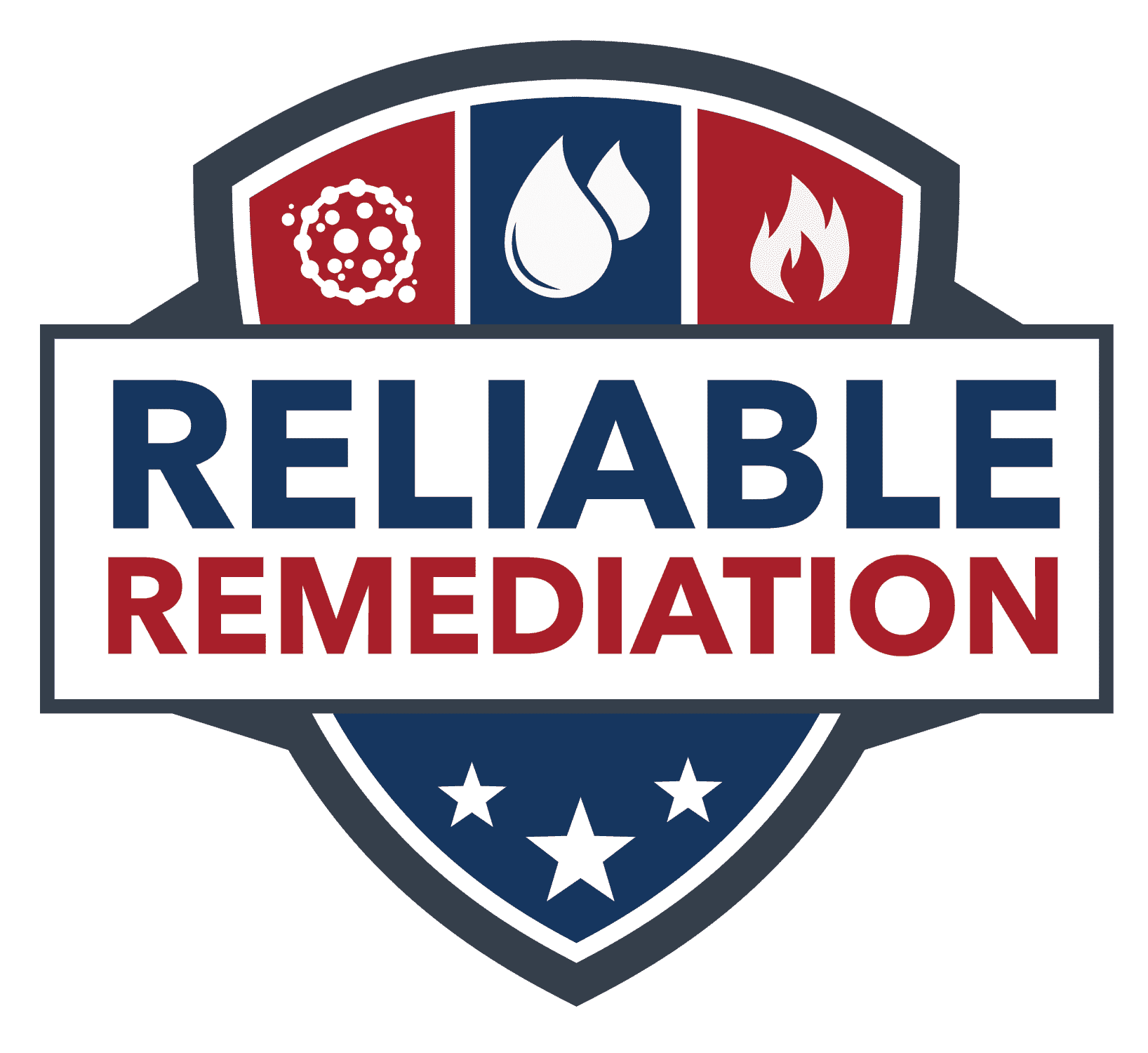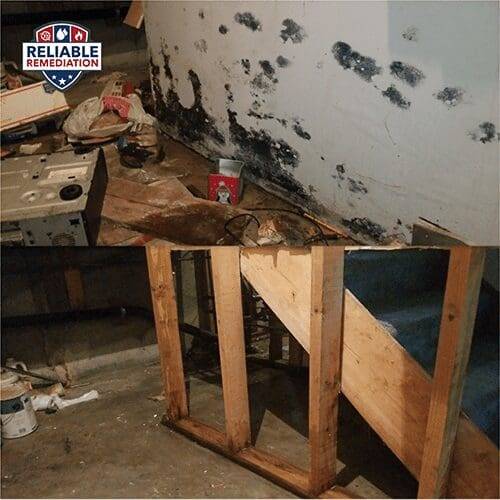
Mold Remediation
Wet building materials i.e., wood, sheetrock, and the like can start to grow and multiply mold and mildew within the first 24-48 hours. Removing wet, moldy building materials like sheetrock is an important step in remediation. Cleaning and drying remaining structural building members are a vital step prior to replacing any damaged or contaminated material
Exposure to mold can be a health concern for anyone but is especially troublesome for infants, children, the elderly, immunocompromised patients, pregnant women, and individuals with existing respiratory conditions. A wide range of health problems including wheezing, nasal and sinus congestion, watery and red eyes, nose and throat irritation, fevers, asthma, emphysema, and other symptoms result from ingesting these mold spores. The cause may even be mold that you cannot see.
The National Standard for Mold Remediation is
physical removal
(and addressing the moisture source). Our technicians are nationally certified through The National Organization of Remediators and Mold Inspectors (NORMI). We use a protocol and process that includes containing the affected area (to avoid cross-contamination) and the use of specialty equipment like HEPA-filtered air scrubbers and vacuums.
possible symptoms of mold expsoure:
- Wheezing
- Stuffy or runny nose
- Itchy, watery eyes
- Rash or hives
Avoiding symptoms from mold:
- Find and fix any leaks right away. Dry wet areas within 48 hours to prevent the mold and fungus from growing.
- Run a dehumidifier to keep household humidity under 50%.
- Have your HVAC ducts professionally cleaned.
- Keep water out of your home. Make sure the ground slopes away from your foundation and check your roof for leaks.
Can Mold Be Cleaned or Do the Materials Need to be Removed?
It depends…We get a lot of questions about when mold should be remediated rather than simply cleaned. Part of the confusion comes from the fact that the five states that currently have mold licensing laws don’t agree. More importantly, none of the thresholds established by these municipalities considers the type of mold, the moisture source feeding the mold, or the reality that even a very small amount of mold (smaller than the established square footage threshold) could be harmful to the occupants.
To clarify the discussion, let me first define two words that are often erroneously used interchangeably: remediation and sanitization. Remediation is the actual removal of contaminated construction materials to locate and repair the moisture/water source that is feeding the mold. The primary purpose of remediation, therefore, is to access and resolve the water source. Sanitization is the process of using a good biocide to lower the microbial count by cleaning the surface and does not involve gross demolition. These are clearly two different approaches to addressing mold, so how do you decide when to use which process?
When determining how to best address a mold problem, it’s important to consider the amount of mold, the type of mold, and the moisture content of the substrate behind it. Remediation would take place when:
- There is 10 square feet of visible mold. When the states established their thresholds, and 10 square feet is the most conservative of the five, they did not consider whether that mold would be in one place or spread throughout the environment. We suggest that the 10 square feet of visible mold would represent mold either contiguous or cumulative in a single air conditioning coverage area. This allows the remediator to segment the project based on whether the mold has been or could be spread throughout the entire living environment. For instance, in a two- story home where there is an air conditioning system on the first floor and one on the second, with the second floor contaminated and the first floor not, a remediation process could be isolated to the second floor.
- Zero-tolerance mold is present. We consider five molds to be zero-tolerance molds, either because they are water-sensitive or highly toxic, and these should always be remediated: Stachybotrys, Chaetomium, Fusarium, Memnoniella, and Trichoderma.
- The moisture content of the substrate on which the mold is growing is greater than 17%. Mold needs water to grow and can get that water from the air (like air infiltration problems, elevated relative humidity, or poor insulation) or from a water source (leaky pipe, roof leak). When moisture content is elevated behind mold growth, remediation is usually recommended so that the water source can be removed or repaired. These three factors provide a common-sense benchmark for determining if remediation or sanitation should be used in addressing mold. Although mold is a serious issue that must be resolved, the reality is that, in many cases, remediation is unnecessary and sanitization could suffice. We can help you determine the best solution using industry best practices, experience, and after a better understanding of what caused your issue and how to fix it – so it never comes back.
Disaster Happens. We can FIX it!
Previous based on an article by Doug Hoffman, CEO of the National Organization of Remediators and Mold Inspectors (NORMI)



